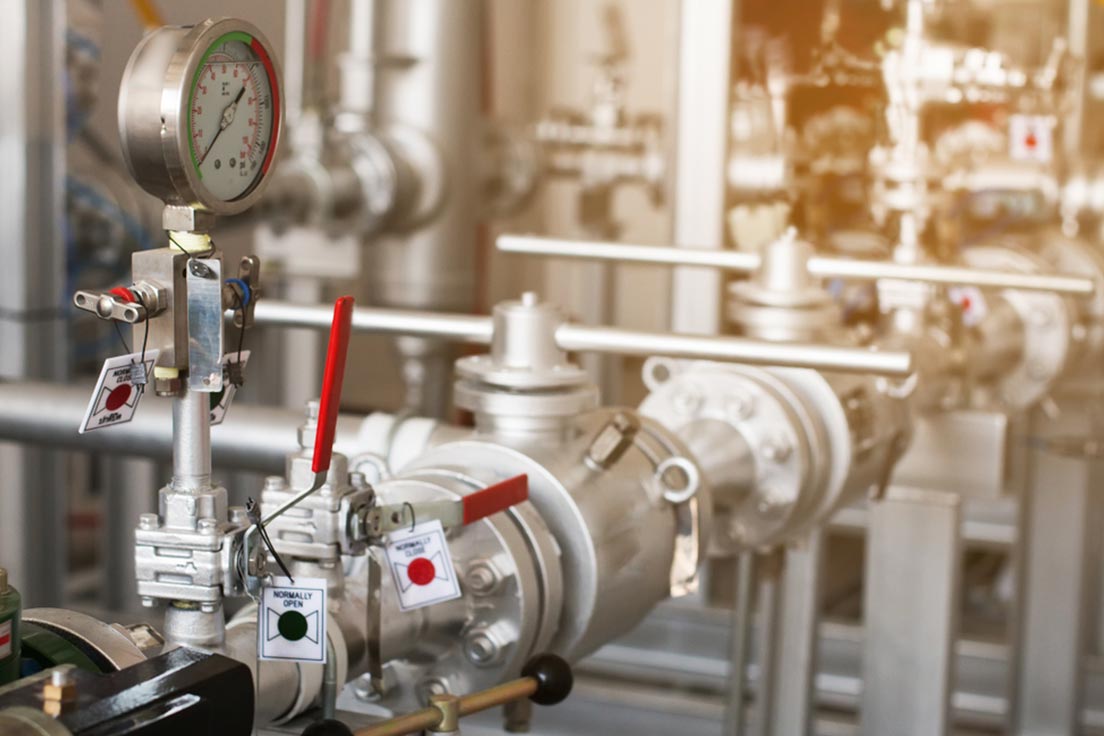Imagine you’re a haystack integrity manager. This isn’t a real job, but we’re working toward an...
Pipeline Monitoring Using Smart Sensors

If you’re a pipeline integrity manager it’s your responsibility to get the right sensor systems in place that will allow you to safely and reliably transport your product. Yet, you may still be experiencing limitations that continue to leave you vulnerable to leaks and damage.
Consider this, are you limiting your thinking around intelligent, remote sensing to in-line technology? Today, aerial data platforms that exist provide powerful new visual data with near-total automation. Plus, you can use these aerial insights to better contextualize data from your existing monitoring systems.
Generate Visual Models of Your Pipeline Right-Of-Way
UAVs capture aerial imagery with incredible spatial resolution and locational accuracy. Think of these images as the building blocks for advanced modelling and data analytics that you can use to reimagine the visual monitoring of your pipeline.
After an inspection, a data processing platform can rapidly process UAV imagery into valuable photogrammetric mapping outputs:
- Orthomosaics: A spatially-accurate visual representation of your pipeline as it stands today, serving as a digital record of your property that all stakeholders can coordinate from. By integrating an ortho within the same GIS that your other monitoring systems feed into, you’re able to augment your monitoring network with pristine, up-to-date visuals of the entire ROW area.
- Digital Elevation Models (DEMs): Using precise laser-scanning sensors or even simple RGB imagery, a data processing platform can create a 3D model of your ROW’s surface and terrain. These models are exceedingly useful in identifying geotechnical and environmental anomalies that gradually occur along a pipeline, such as erosion and ground movement.
Automation Both Inside and Outside Your Pipeline
Pipeline monitoring using smart sensors isn’t just about what readings you can capture. How the data is analyzed and actioned is just as crucial. A UAV is going to be producing thousands of images every single flight, and if you’re flying weekly or daily, that’s a major workload for your team to take on. To that end, data processing platforms leverage Artificial Intelligence (AI) to handle the bulk of repetitive data analytics and alert you to actionable issues along your ROW. That being said, AI is a new technology and needs a touch of human assistance to get it right.
Ultimately, your team winds up with a SCADA-style workflow for your visual inspections, receiving a picklist of anomalies from each inspection and deciding the correct course of action:
- Anomaly and Change Detection: At SkyX, we train our AI algorithms to detect and categorize a variety of anomalies that pose a threat to pipeline integrity. The simplest example of this is third-party activity, where the system flags vehicles or persons along the ROW. A more complex example is using change detection to monitor for erosion, by comparing the elevation values of a DEM from each inspection and flagging where ground loss has occurred.
- Predictive Analytics: The pinnacle that your entire aerial monitoring program will be building towards. It starts by generating critical points of data that correlate what the aerial platform sees visually with readings from your in-line monitoring systems. AI then uses these critical points to build a predictive model around the integrity issues happening along your line. Using this model, you can understand issue hotspots, the likelihood of future incidents, and how non-issues are trending into hazards on your ROW – and leverage that knowledge to prevent damage before it occurs.
Different Sensors Help You Solve for Different Problems
To tailor the data you receive from the above outputs and analysis – you can outfit your UAV with different sensors that help you hone-in on specific issues:
- RGB Camera: Ideal for simple visual observation for signs of external disruptions and unauthorized third-party activity. A UAV can capture imagery with detail down to less than an inch, but remember, it’s likely going to be capturing thousands of them. This is why AI analysis plays such a crucial role in the aerial data process.
- LiDAR: Remember those Digital Elevation Models we spoke about earlier? While you can generate these models via photogrammetry from camera imagery – LiDAR sensors use laser pulses to provide precise measurements of ground surface and terrain. When modelling your ROW, photogrammetry yields a rough estimate, while LiDAR yields a digital twin. This makes LiDAR the premier choice for observing subtle changes in erosion or ground movement.
- Infrared: Certain leaks can be impossible to spot with the naked eye, but thermal imaging can change that. Oil slicks in a nearby creek, invisible natural gas plumes, or changes in soil temperature due to underground leakage – an infrared sensor can make these issues more apparent than ever before.
- Multispectral: Multispectral sensors measure various wavelengths of light and infrared radiation. These readings can be used to make accurate assessments of plant health and are in abundant use in the agricultural sector for that very reason. In pipeline monitoring applications, these spectral insights can be used to detect dying vegetation from an underground leak early on.
By letting data dictate your aerial inspection drone, you’ll gather the necessary raw material to fuel actionable insight.
How Aerial Data Augments SCADAs, PIGs, and Fiber Optics
This new layer of visual data for your pipeline integrity management program isn’t meant to replace your existing systems. In fact, what you’re seeing outside the pipeline can help to better contextualize the readings you’re seeing from within it:
- SCADA Systems: While a SCADA’s point sensors provide valuable information on the flow of product within the pipeline, they suffer from a variety of frustrating issues. Undetected pinhole leaks, inability to localize a detected leak, and even false alarms – an aerial data solution can catch what your SCADA misses and visually verify leak alerts.
- Pipeline Inspection Gauges (PIGs): Great for inspecting the structural integrity of a pipe, but far too labor-intensive to deploy on a routine basis. What you see during routine aerial monitoring – such as potential leaks, ground movement, or extreme environmental conditions – can help you understand where and when to deploy a PIG.
- Fiber Optics: Despite their value as a single in-line monitoring system for detecting multiple issues, fiber optics are uncommon due to their exorbitant price tag and inability to retrofit to pre-existing infrastructure. Even with these systems in place, an aerial data solution can serve as your first response to an alert to gather visual intel on the situation, before sending your maintenance crews in.
Holistic Pipeline Monitoring Using Smart Sensors
Aerial data platforms provide a highly-autonomous, smart-sensing solution for monitoring your pipeline. With UAVs and AI continually sourcing and analyzing your ROW visually, you gain a revolutionary new layer of data that you can use to mitigate external issues and derive greater meaning from your existing systems.
Have questions about how high-quality aerial data can elevate your organization?
Contact our team to discuss your unique challenges and data requirements.
